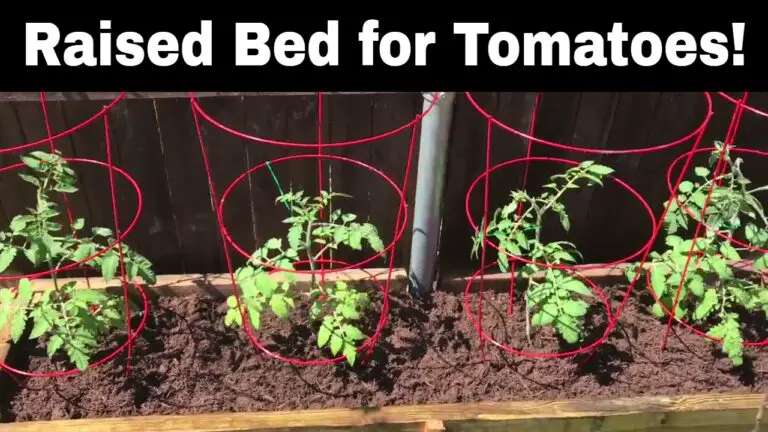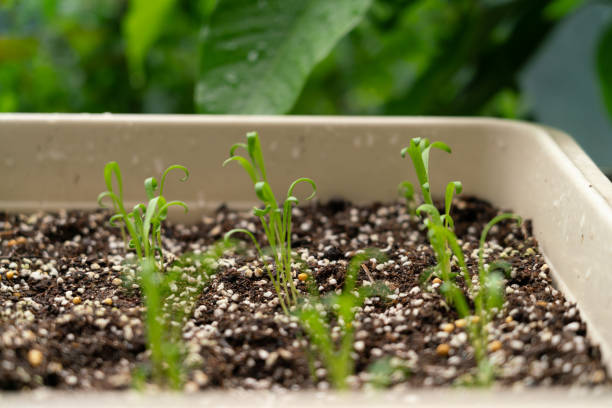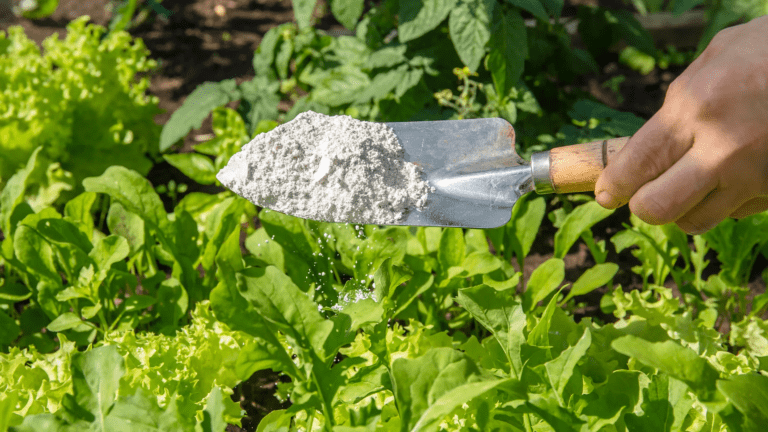Asparagus Bed Strategies: Permanent Plot Super Cultivation
Table of Contents
Asparagus Bed Site Selection
Selecting Asparagus Bed the optimal site for your garden is crucial for its success. Choose a location that receives ample sunlight, ideally at least six to eight hours per day, for photosynthesis to occur efficiently. Additionally, ensure the area has good air circulation to prevent the buildup of moisture, which can lead to fungal diseases in plants. Avoid spots that are prone to water logging to prevent root rot and other water-related issues.

Consider the soil quality of the site before starting your garden. Conduct a soil test to determine its pH level and nutrient content. Most plants thrive in well-draining soil with a pH level between 6.0 and 7.0. If necessary, amend the soil with organic matter such as compost to improve its structure and fertility. Lastly, assess the site for potential challenges like strong winds, which can damage delicate plants, and nearby trees that may compete for sunlight and nutrients with your garden plants.

Soil Preparation
To ensure optimal soil health for your garden, it is essential to start with a thorough soil analysis. Conducting a soil test can provide valuable insights into the nutrient levels, pH balance, and overall composition of your soil. Based on the results, you can then make informed decisions about the amendments and fertilizers needed to create an ideal growing environment for your plants.
Once you have identified any deficiencies or imbalances in your soil, the next step is to prepare the soil for planting. This typically involves tilling the soil to improve its structure, breaking up compacted areas, and incorporating organic matter such as compost or aged manure to increase fertility and improve drainage. By taking the time to properly prepare your soil, you can set the foundation for a successful and productive garden season.
The table below shows the summary of soil preparation for growing Asparagus:
| Step | Description |
| 1. Soil Testing | Before planting, consider having your soil tested to determine if it lacks any essential minerals and nutrients. You can do this through your County Extension Office or with a digital meter. |
| 2. Timing | Soil preparation can be done when the ground is not too wet or frozen. As long as your soil is workable, it’s fine to plant. |
| 3. Digging the Hole | Dig a hole deep and wide enough for the root system to easily expand. Keep the topsoil separate. |
| 4. Soil Amendments | Mix dehydrated cow manure, garden compost, or peat moss (up to 1/3 concentration) into the topsoil. Grass clippings and shredded leaves from your lawn can also be added. |
| 5. Soil Types | Consider your soil type: |
- Clay and Silt Soils: These soils are made of very small particles, feel slick and sticky when wet, and hold moisture well but resist water infiltration.
- Loam Soils: A mix of sand, silt, clay, and organic matter. Loam soils are loose, absorb water well, and store moisture.
- Sandy Soils: Contain large visible particles and are usually light in color. Sandy soils drain well but may need organic amendments for better water retention.
Plant Selection
When selecting plants for your garden, it is crucial to consider the specific environmental conditions of your location. Ensure that the plants you choose are well-suited to the amount of sunlight, soil type, and climate of your region. Conduct thorough research or consult with local gardening experts to determine which plants will thrive in your particular setting. Choosing native species can often lead to greater success and require less maintenance in the long run.
Furthermore, take into account the purpose of your garden when selecting plants. Are you aiming for a colorful display of flowers, a bountiful harvest of vegetables, or a tranquil oasis of greenery? Tailor your plant selection to align with your goals and vision for the garden space. Consider factors such as bloom time, height, spread, and fragrance to create a harmonious and visually appealing garden that meets your needs and preferences.
When selecting and growing asparagus, there are several important factors to consider. Here they are below:
| Factor | Considerations |
| Type of Asparagus | Choose between planting seeds or crowns (one-year-old plants). Crowns are preferred for faster establishment. |
| Gender of Plants | Asparagus plants are dioecious (male or female). Male plants tend to produce more spears and live longer, making them ideal for home gardens. |
| Varieties | Popular varieties include Millennium, purple passion, and the ‘Washington’ series (Mary, Martha, and Waltham). |
| Site Selection | Well-drained soil in full sun is essential. Asparagus plantings can last 15+ years, so choose a location carefully. |
| Planting Time | Asparagus can be planted in spring (typically March 15-April 15). |
| Depth and Spacing | Plant crowns vertically and horizontally at the right depth. Proper spacing is crucial. |
| Soil Moisture | Good soil moisture during planting promotes root and fern growth. |
| Avoid Mistakes | Planting non-hardy varieties, neglecting soil fertility, and improper spacing can affect establishment. |
Remember that asparagus is a perennial crop, so thoughtful planning and care will yield delicious spears for years to come.
Spacing and Layout
To ensure optimal growth and development of your plants, proper spacing and layout are essential factors to consider when setting up your garden. Adequate spacing between plants allows for sufficient air circulation, reducing the risk of pests and diseases. Additionally, it prevents competition for resources such as sunlight, water, and nutrients, promoting healthier and more robust plant growth. Be sure to refer to specific plant spacing recommendations, as each type of plant requires different spacing for optimal yields.
When planning the layout of your garden, consider factors such as sunlight exposure, water availability, and soil quality. Place taller plants towards the back of the garden to prevent shading of shorter plants and ensure that each plant receives adequate sunlight. Group plants with similar water and nutrient requirements together to facilitate efficient watering and fertilizing practices. Utilize companion planting techniques to enhance plant health and repel pests naturally. A well-thought-out layout can maximize space utilization and create a visually appealing and productive garden environment.
The Table below shows the spacing and layout for Asparagus:
| Factor | Measurement |
| Planting Depth | 6-8 inches |
| Space Between Plants | 12-18 inches |
| Space Between Rows | 24 inches (2 feet) |
| Number of Plants per Bed (4’x12’) | Approximately 10 plants |
| Soil pH | 6.5-7.5 (slightly acidic to neutral) |
| Soil Type | Well-draining, loamy soil |
| Sun Exposure | Full sun |
| Fertilization | Use a balanced 10-10-10 fertilizer |
| Watering | Maintain consistent moisture |
| Harvesting | Begin in the second year after planting |
Mulching Techniques
Mulching is a fundamental practice in gardening that offers a range of benefits for plant health and garden maintenance. By applying a layer of mulch to the soil surface, gardeners can help suppress weeds, conserve moisture, regulate soil temperature, and improve overall soil health. Organic mulches, such as compost, straw, or wood chips, gradually break down over time, adding valuable nutrients to the soil and enhancing its structure.
In addition to its role in soil health, mulch can also contribute to a more aesthetically pleasing garden environment. Different types of mulch can lend a distinctive look to the garden beds while serving their practical purposes. Whether you opt for organic or inorganic mulches, proper application and maintenance are key to reaping the full benefits of mulching. Regularly replenishing mulch layers and avoiding piling mulch against plant stems can ensure optimal plant growth and a vibrant garden landscape.
Watering and Fertilizing
Proper watering and fertilizing are essential components of a successful garden. When it comes to watering, it’s crucial to strike the right balance. Overwatering can lead to root rot and other diseases, while underwatering can stunt plant growth and reduce yields. It’s important to water deeply and infrequently, allowing the soil to dry out slightly between waterings to promote healthy root growth and nutrient uptake.
When it comes to fertilizing, understanding the nutritional needs of your plants is key. Different plants require different nutrients at varying stages of growth. Using a balanced fertilizer with the correct NPK ratio can help ensure that your plants have access to the essential nutrients they need to thrive. Whether you opt for organic or synthetic fertilizers, be sure to follow the instructions on the label and avoid overfertilizing, which can harm your plants and contribute to nutrient runoff.

Weed Control Methods
Weeds can quickly become a nuisance in any garden, competing with your precious plants for nutrients, water, and sunlight. To effectively control weeds, it’s essential to employ a multi-faceted approach. Start by regularly inspecting your garden beds and promptly removing any weeds by hand, making sure to pull them out from the root to prevent regrowth.
In addition to manual weeding, utilizing organic mulches like straw, wood chips, or shredded leaves can help suppress weed growth by blocking sunlight and hindering weed seed germination. Mulching not only reduces the need for hand weeding but also helps retain soil moisture and improve soil health over time. Experiment with different types of mulch to find what works best for your specific garden environment and plant species.
Pest and Disease Management
One effective way to manage pests and diseases in your garden is through cultural practices that promote plant health and resilience. Keeping your plants well-watered, properly spaced, and adequately fertilized can help them withstand pest attacks and diseases. Additionally, practicing good garden hygiene by removing diseased plant debris and weeds can prevent the buildup of pathogens and pests.
Another strategy for pest and disease management is the use of biological controls, such as beneficial insects that feed on pests or microorganisms that compete with disease-causing pathogens. These natural enemies can help maintain a healthy balance in your garden ecosystem, reducing the need for chemical interventions. When selecting biological controls, it is important to consider factors such as compatibility with the target pest or disease, environmental impact, and application timing for optimal effectiveness.
Here’s a summary of pest and disease management for asparagus:
| Pest/Disease | Identification | Biology | Management |
| Purple Spot | Sunken, purple, oval-shaped lesions on asparagus spears. Tan to brown lesions on the fern. | Fungus. Overwintering structures (pseudothecia) release ascospores via rain splash and wind. | Scout fields for symptoms. Use disease forecasters to time fungicide applications. Refer to recommended fungicides for purple spot control. |
| Rust | Foliar disease with four different lesions caused by four spore types. | Fungus. Spores spread via wind and rain. | Remove infected plant material. Apply fungicides if necessary. |
Remember that effective pest and disease management depends on tailoring strategies to the specific species present in your asparagus production fields
Winter Care Tips
During the winter months, it is essential to protect your garden from the harsh conditions to ensure its survival and future growth. One key aspect of winter care is insulating delicate plants from freezing temperatures by using protective coverings such as burlap or frost cloth. These materials act as a barrier against the cold, preventing frost damage and promoting a healthier environment for your plants to thrive in.
In addition to providing insulation, winter care also involves monitoring the moisture levels in your soil. While the temptation may be to water less frequently in the colder months, it is crucial to ensure that your plants remain adequately hydrated. Aim to water your garden when needed, taking into account factors such as rainfall and soil drainage. By maintaining proper moisture levels, you can prevent dehydration and root damage, leading to healthier plants come springtime.
Harvesting Guidelines
To ensure a bountiful harvest, it is crucial to harvest your crops at the right time. Each plant has specific indicators that signal it is ready for harvesting. For example, tomatoes should be picked when they are fully colored and firm to the touch, while lettuce is best harvested in the morning before it becomes bitter. By following these guidelines, you can enjoy the freshest produce from your garden.
Proper harvesting techniques are essential to maximize the flavor and nutritional value of your crops. Using sharp, clean tools to harvest your fruits and vegetables can help prevent damage and bruising. Additionally, handling delicate produce with care during harvesting can extend its shelf life and overall quality. Remember to harvest regularly to encourage continuous growth and productivity in your garden.
Pruning and Maintenance
Pruning is a vital practice in maintaining the health and vigor of your plants. By removing dead or diseased branches, you not only improve the aesthetic appeal of your garden but also prevent the spread of pathogens. Regular pruning promotes air circulation and sunlight penetration, essential for overall plant growth.
Maintenance tasks such as cleaning tools, sharpening blades, and removing debris are equally important. These practices not only prolong the lifespan of your gardening tools but also minimize the risk of transmitting diseases between plants. Stay proactive in your pruning and maintenance routine to ensure a thriving garden year-round.

Succession Planting
Succession planting is a strategic method of planting different crops in the same space sequentially throughout the growing season. By staggering planting times and utilizing the available space effectively, gardeners can maximize their harvest and extend the overall production period. This technique is particularly beneficial for crops with short maturity periods, allowing for continuous supply and reducing wastage.
One key aspect to consider when planning succession planting is understanding the specific growing requirements of each crop to ensure a smooth transition between plantings. By selecting crops that are well-suited to the successive planting schedule and considering factors such as temperature, sunlight, and soil conditions, gardeners can optimize their yields and maintain a thriving garden throughout the season.
Companion Planting Ideas
Pairing plants strategically in your garden can offer numerous benefits beyond simply saving space. For instance, planting aromatic herbs like basil near tomatoes can help deter pests that often plague tomato plants. Additionally, the strong aroma of herbs can attract beneficial insects that aid in pollination and pest control.
Another common companion planting idea is the Three Sisters planting method, where corn, beans, and squash are planted together. This traditional Native American planting technique is not only efficient in terms of space utilization but also beneficial for the plants themselves. The corn provides a structure for the beans to climb, the beans fix nitrogen in the soil, benefiting all three plants, and the squash acts as a living mulch, suppressing weeds and retaining soil moisture.
Seasonal Care Schedule
As the seasons change, so do the needs of your garden. Each season brings its own set of tasks and priorities to ensure the health and vitality of your plants. In the spring, focus on preparing your garden beds, planting new crops, and providing adequate water and nutrients as plants enter their active growth phase. Monitor for any early signs of pests or diseases and address them promptly to prevent further damage.
Summer is a time of rapid growth and abundant sunshine. Be diligent in watering your plants, especially during hot spells, and consider mulching to retain soil moisture. Regularly check for signs of stress in your plants such as wilting or yellowing leaves. In the fall, begin to transition your garden for the cooler weather ahead by harvesting crops, cleaning up debris, and preparing for winter. Consider planting cover crops to enrich the soil and protect it during the dormant season.
Troubleshooting Common Issues
If you notice yellowing or browning of the leaves on your plants, it could be a sign of nutrient deficiency or over-fertilization. Conduct a soil test to determine the specific needs of your plants and adjust your fertilizing regimen accordingly. Remember to follow recommended guidelines for the type of plants you are growing to avoid nutrient imbalances.
Another common issue many gardeners face is pest infestation. Identify the type of pest causing damage to your plants and choose the appropriate control method. Whether it’s aphids, spider mites, or caterpillars, there are organic and chemical options available to help protect your plants. Regular monitoring and prompt action can help prevent pest problems from escalating and damaging your garden.
To Know More About Asparagus Cultivation, Watch This Video!
How can I prevent my plants from getting waterlogged?
To prevent waterlogging, make sure the soil has good drainage by adding organic matter and avoiding compacted soil.
Why are my plants wilting even though I water them regularly?
Wilting plants could be a sign of overwatering or underwatering. Check the soil moisture level before watering and adjust accordingly.
How can I improve the health of my plants without using chemical fertilizers?
Consider using organic fertilizers such as compost, manure, or organic plant food to improve the health of your plants naturally.
What should I do if I notice pests on my plants?
Try using natural pest control methods such as neem oil, insecticidal soap, or introducing beneficial insects to control pest infestations.
How can I protect my plants from frost during the winter?
Use frost cloth or row covers to protect your plants from frost damage during the winter months.
When is the best time to harvest my fruits and vegetables?
Harvest fruits and vegetables when they are mature and ripe. Refer to specific guidelines for each plant variety for the best time to harvest.
How often should I prune my plants for optimal growth?
Prune plants as needed to remove dead or diseased branches, promote new growth, and maintain their shape and size.
What is succession planting and how can I implement it in my garden?
Succession planting involves planting new crops as soon as one crop is harvested to maximize yield and extend the growing season.
Can companion planting help with pest control in my garden?
Yes, companion planting can help deter pests and attract beneficial insects to your garden. Consider planting herbs, flowers, or specific vegetable combinations for pest control.






